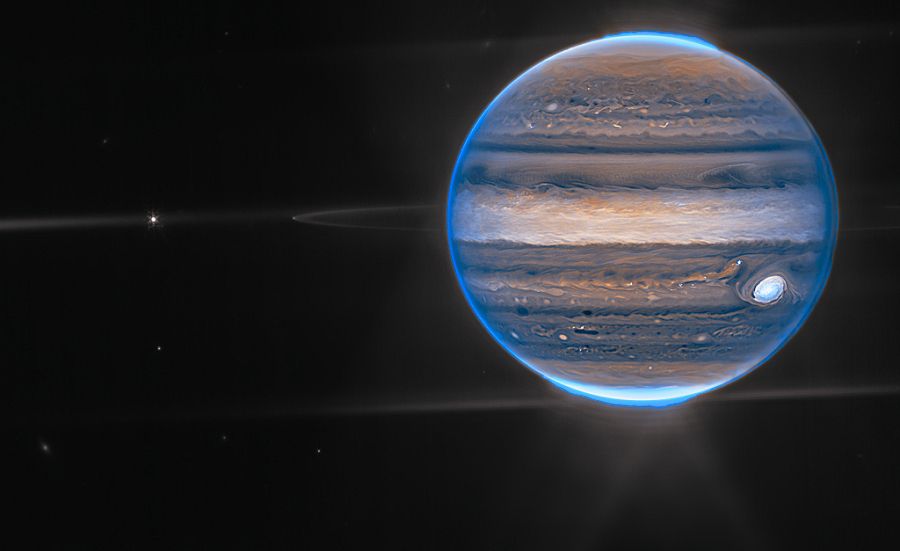JUPITER AS SEEN BYTHE JAMES WEBB SPACE TELESCOPE | |
|
Now NASA's James Webb Space Telescope has captured new images of the planet. Webb's observations of Jupiter will give scientists even more clues about Jupiter's inner life. The images obtained with Webb are truly remarkable, we can see details of Jupiter with its rings, its tiny satellites and even its galaxies in a single image. In the stand-alone view of Jupiter, created from a composite of several Webb images, the auroras extend to high altitudes above Jupiter's north and south poles. The aurora glows in a filter mapped to more red colors, which also highlights reflected light from lower clouds and upper mists. A different filter, mapped to yellows and greens, shows mists swirling around the north and south poles. A third filter, mapped to blue, presents light reflected from a deeper main cloud. The Great Red Spot, a famous storm so big it could swallow Earth, appears white in these views, like other clouds, because they reflect a lot of sunlight. Brightness here indicates high altitude, so the Great Red Spot has high altitude haze, as does the equatorial region. Numerous bright white "spots and stripes" are observed which are likely very high level cloud tops of condensed convective thunderstorms. In a wide-field view, Webb sees Jupiter with its faint rings, which are a million times fainter than the planet, and two tiny moons called Amalthea and Adrastea. The blurry spots in the lower background are probably "photobombing" galaxies. Information from the James Webb Telescope arrives at the Space Telescope Science Institute (STScI), Webb's science and mission operations center, as raw data. STScI processes the data into calibrated files for scientific analysis and forwards it to the Mikulski Archive for Space Telescopes for dissemination. Discoveries about the universe thanks to the James Webb space telescope should allow us to take an extraordinary leap in knowledge. |
|
| Luc T. for DayNewsWorld | |
 |
|




